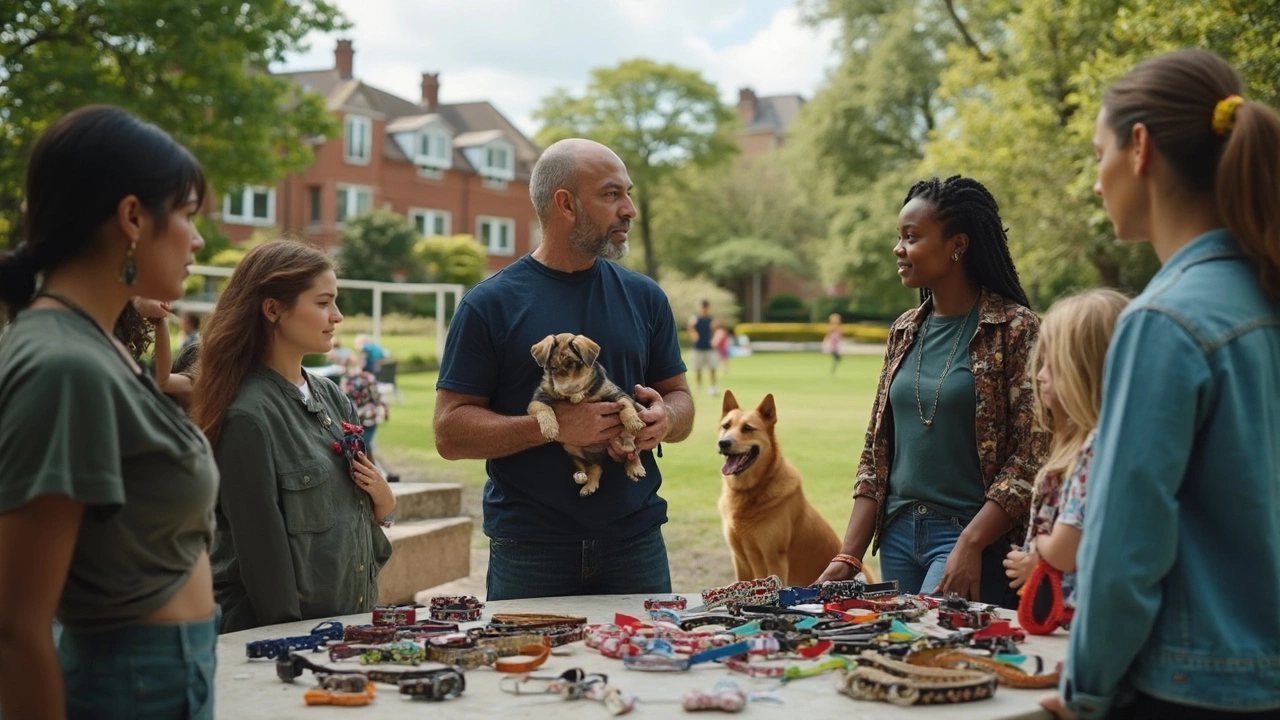Training Tools: Your Quick Guide to Picking the Right Gear
If you’ve ever tried to teach a pup to sit, stay, or stop barking, you know the right tools can make the job a lot easier. The good news? You don’t need a pricey kit to get results. Below we break down the basics, so you can grab what works, skip the fluff, and start seeing progress fast.
Must‑Have Tools for Every Dog
1. Clicker or Marker. A clicker gives your dog an instant ‘yes!’ sound when they do the right thing. It’s cheap, easy to use, and works for most breeds. If you’d rather not buy one, a simple word like “yes” can replace it.
2. Treat Pouch. Small, tasty treats are the currency of training. A pouch that clips to your belt keeps them handy and stops you from digging through pockets mid‑session.
3. Gentle Lead. A 4‑foot leash with a comfortable handle lets you guide without pulling. Look for a nylon or leather strap that won’t choke the neck if the dog pulls suddenly.
4. Harness for Pull‑Sensitive Dogs. If your pup yanks on the leash, a front‑clip harness redirects the pull and protects the neck. It also gives you better control for recall drills.
5. Distraction Toys. A durable chew toy or a soft ball can refocus a nervous dog during training in busy parks. Keep one in your kit for quick “reset” moments.
Choosing the Right Gear for Your Pup
First, think about size and breed. A tiny Chihuahua will need a lightweight clicker and a snug harness, while a large Labrador benefits from a sturdy lead and a wider harness. Next, consider the training style you prefer—clicker‑based, marker‑word, or positive‑reinforcement with treats. Your choice will dictate how many treats you need and whether a clicker is worth the extra cost.
Budget matters, too. You can find a reliable clicker for under £5 and a basic harness for about £10‑£15. If you’re buying all at once, look for combo packs that include a lead, harness, and treat pouch—these often shave off a few pounds compared to buying separately.
Finally, test comfort. A good training tool should feel natural to both you and your dog. Slip on the harness and walk a few steps; if it rubs or slides, try an adjustable model. For leads, the grip should be smooth, not too thick, so you can hold it for longer sessions without hand fatigue.Once you’ve got the basics covered, you can start adding specialty items like agility poles, nose‑work scent kits, or remote‑controlled toys. Those are great for advanced training, but they’re not essential for everyday obedience work.
Remember, the tool is only as good as the consistency you bring. Use the same commands, reward quickly, and keep sessions short—five to ten minutes is enough to keep a dog focused. Mix in play, stay patient, and celebrate every tiny win. Before long, your pup will be mastering tricks you once thought were impossible, all thanks to a few simple, well‑chosen training tools.
Posted By Bryndle Redding On 24 Jun 2025 Comments (0)
Does Cesar Millan Use Training Collars? Everything You Need to Know About His Dog Training Tools
Curious whether Cesar Millan uses training collars? This article breaks down the facts about the tools he uses, how they work, and the reasons behind his choices. Discover what really happens behind the scenes, learn tips for safer training, and see how the dog training world views his methods today. If you’re thinking of using training collars or just want to understand the debate, this is for you.
READ MOREPosted By Bryndle Redding On 25 Feb 2025 Comments (0)
Humane Alternatives to Shock Collars for Dogs
Exploring alternatives to shock collars, the article suggests humane options that offer effective dog training methods without causing harm. It highlights tools like positive reinforcement, clicker training, and no-pull harnesses. Each method is designed to promote a better relationship between owner and pet while ensuring safety. Practical tips and interesting facts about dog behavior and learning styles provide a comprehensive guide for dog owners. Readers will find actionable insights to train their pets effectively and ethically.
READ MORE
